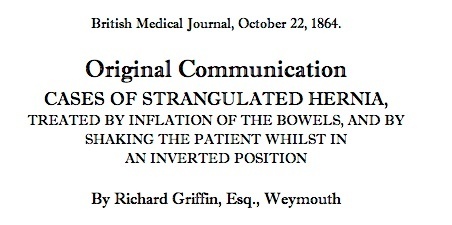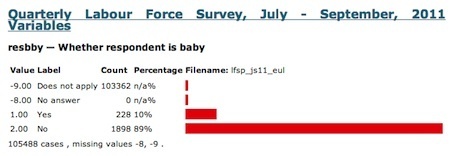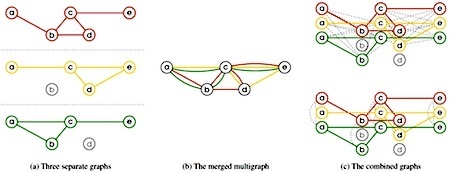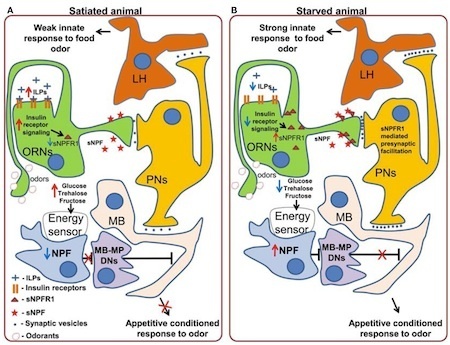Marc Abrahams's Blog, page 514
February 20, 2013
He’s the “k”, and has great Erdos and Bacon numbers
 “He is the ‘k’ in G. W. Peck, a pseudonym for a group of six mathematicians,” says Wikipedia, which goes on to say:
“He is the ‘k’ in G. W. Peck, a pseudonym for a group of six mathematicians,” says Wikipedia, which goes on to say:
Kleitman has coauthored at least six papers with Erdős, giving him an Erdős number of 1. He was a math advisor and extra for the film Good Will Hunting.[5]
Since Minnie Driver of Good Will Hunting appeared in Sleepers with Kevin Bacon, Kleitman has a Bacon number of 2. Adding the two numbers results in an Erdős–Bacon number of 3, the lowest currently known.[6]
He’s also the author of “My Career in the Movies,” about his involvement in Matt Damon and ‘s [Ben (movie) Affleck, not Ben (cement) Affleck] film “Good Will Hunting”:
One day this spring I got a phone call from someone asking if I would talk to two young men who were writing a screenplay for a movie. I made an appointment with them, and they appeared in my office. They told me the movie was about a young guy they had originally envisioned being a genius in physics, but after talking with Sheldon Glashow of Harvard they had decided his being a mathematician was more plausible….
Here’s a math scene from the movie:

Strangulated, Shaken and Inverted, for medical reasons
For details of this study (“Cases of Strangulated Hernia, Treated by Inflation of the Bowels, and by Shaking the Patient Whilst in an Inverted Position,” R Griffin, British Medical Journal, 1864), see Alice Dreger’s blog.

From the mouths of babes: An existential statistic [British]
The UK’s Quarterly Labour Force Survey includes a variable called “resbby — Whether respondent is baby“. The July-September 2011 survey reports that the value of this variable is YES for 228 of the 105488 respondents. Here is the pertinent detail from that report:
Here is that same detail, this time including the full graph:
A year later, in 2012, things had changed slightly: of 99901 respondents, 209 are tallied as being babies, 1688 being tallies as not being babies, and 98004 are tallied as “Does not apply”.
In both years, the people who ran the survey found a remarkable finding: That, in considering most of the labor force members they survey, the basic question “Is the respondent is a baby?” is not worth considering.
(Thanks to investigator José Iparraguirre, Chief Economist of Age UK, for bringing this to our attention.)

A zillion, on a log scale
A look at how little kids look at big numbers, if you make them look at all the numbers on a little line:

A rare photograph of researcher Rips
“How Many Is a Zillion? Sources of Number Distortion,” Lance J. Rips, Journal of Experimental Psychology: Learning, Memory, and Cognition, epub Dec 17 , 2012. The author, at Northwestern university, explains:
“When young children attempt to locate the positions of numerals on a number line, the positions are often logarithmically rather than linearly distributed. This finding has been taken as evidence that the children represent numbers on a mental number line that is logarithmically calibrated. This article reports a statistical simulation showing that log-like positioning is a consequence of 2 factors: the bounded nature of the number line and greater uncertainty about the meaning of the larger, less frequent number words. Two experiments likewise show that even college students produce log-like placements under the same 2 conditions. In Experiment 1, participants identified positions on a number line for a set that included both conventional and fictitious numbers (e.g., a zillion). In Experiment 2, participants did the same for conventional numbers that included some larger, unfamiliar items (e.g., a nonillion). Both experiments produced results better fit by logarithmic than by linear functions.”
(via Christian Jarrett)
BONUS (unrelated):
TOWARDS THE ULTIMATE OPTICAL DETECTION SENSITIVITY: NEW SPECTROSCOPIC OPPORTUNITIES- AND A ZILLION NEW WAVELENGTH/FREQUENCY STANDARDS

February 19, 2013
Dr. Altschuler on … famous character’s ailments
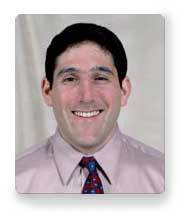 Following Improbable’s recent note about Dr. Altschuler’s Ice Cream Headache Inducement Method we turn now to his work on famous character’s ailments.
Following Improbable’s recent note about Dr. Altschuler’s Ice Cream Headache Inducement Method we turn now to his work on famous character’s ailments.
Eric Altschuler, M.D., Ph.D., who is currently Associate Professor of Physical Medicine and Rehabilitation, New Jersey Medical School and Associate Professor of Microbiology & Molecular Genetics, New Jersey Medical School, has written extensively on this broad subject – examining the question, for example – did the biblical figure Samson (son of Manoah, Judges, chapters 13-16,) suffer from antisocial personality disorder (ASPD) ? To find out, Dr. Altschuler (and colleagues) applied the very same DSM-IV criteria which could be used to diagnose a current-day patient, to records regarding the behaviour of 3000 year-old Samson.
“The DSM-IV requires that 3 of 7 criteria be met for the diagnosis of ASPD. Samson meets 6.“
See : Did Samson Have Antisocial Personality Disorder? Eric Lewin Altschuler, MD, PhD; Ansar Haroun, MD; Bing Ho, MD; Amy Weimer, MD, Archives of General Psychiatry 2001;58(2):202-203.
Dr. Altschuler has also examined the case of Ezekiel, who may have suffered from epilepsy – see: Did Ezekiel have temporal lobe epilepsy? (2002). Archives of General Psychiatry, 59, 561-562.
Along with Dr. Jekyll and Mr. Hyde, who could have had substance dependency issues. see: Dr. Jekyll and Mr. Hyde: A Primer on Substance Dependence Eric Lewin Altschuler, M.D., PH.D.; Daniel Wright, PH.D. Am. J. Psychiatry 2000; 157:484-484.
And Count Dracula, who might have suffered from Hereditary Somnambulism see: letters to the editor: Journal of the Royal Society of Medicine, Volume 96 January 2003. (page 2)
COMING SOON : Dr. Altschuler on . . . Whole Body Discrepancies

Name That Child Computationally
A new study outlines how the Google PageRank algorithm is used to choose a name for a new child. In accord with mathematicians’ traditional practice, the study does not explicitly name the name of even one child:

Lead author Folke Mitzlaff, who does not reveal how his own first name was chosen.
“Recommending Given Names – Mining Relatedness of Given Names based on Data from the Social Web,” Folke Mitzlaff and Gerd Stumme, arXiv:1302.4412, February 18, 2013. (Thanks to investigator Mason Porter for bringing this to our attention.) The authors, at the University of Kassel, Germany, explain:
“All over the world, future parents are facing the task of finding a suitable given name for their child…. The present work tackles the problem of recommending given names, by firstly mining for inter-name relatedness in data from the Social Web. Based on these results, was built… We also show, how the gathered inter-name relationships can be used for meaningful result diversification of PageRank-based recommendation systems.”
This graph illustrates how PageRank figures into the process:

Involuntary Hippophagia (5): Man Bites Horse in the Antipodes
 Sometimes a concept, such as Involuntary Hippophagia can be better understood by examining its opposite, turning it on its head if you will. Here is a case of a man who had an ungovernable temper, and who was overtaken by a fit of anger which caused him, perhaps involuntarily, to bite a horse.
Sometimes a concept, such as Involuntary Hippophagia can be better understood by examining its opposite, turning it on its head if you will. Here is a case of a man who had an ungovernable temper, and who was overtaken by a fit of anger which caused him, perhaps involuntarily, to bite a horse.
From : ‘The Country Page‘ of The Argus (Melbourne, Australia), Friday 27th January, 1928.
MAN BITES HORSE’S EAR
STRANGE GREEK CUSTOM
“Case of Ungovernable Temper”
BENDIGO:-Thursday. On a charge of having caused unnecessary pain to a horse, and having kicked it and bitten off part of its ear, Omirus Jacorides, a Greek, was fined £3 and ordered to pay £3/7/6 costs.
Constable Scott said that Jacorides, who was the driver of a fishmonger’s delivery cart, punched the horse on the nose and the animal reared on its hind legs. [The] Defendant had hold of the horse’s ear with his teeth, and [a] portion of the ear was severed.
Mr. J. Smally, for the defence, said that Jacorides was not familiar with Australian customs, and did not think he was doing wrong. In Greece it was the custom to bite horses by the ear.
Mr. Cook: P.M., said that it was a case of ungovernable temper, and the man’s action involved cruelty to the horse.

February 18, 2013
Rota’s “Ten Lessons I wish I had been Taught”
Gian-Carlo Rota composed these thoughts, in 1996:
Ten Lessons I wish I had been Taught
…I have been collecting some random bits of advice that I keep repeating to myself, do’s and don’ts of which I have been and will always be guilty. Some of you have been exposed to one or more of these tidbits. Collecting these items and presenting them in one speech may be one of the less obnoxious among options of equal presumptuousness. The advice we give others is the advice that we ourselves need. Since it is too late for me to learn these lessons, I will discharge my unfulfilled duty by dishing them out to you. They will be stated in order of increasing controversiality.
Lecturing
Blackboard Technique
Publish the same results several times. … The mathematical community is split into small groups, each one with its own customs, notation and terminology. It may soon be indispensable to present the same result in several versions, each one accessible to a specific group; the price one might have to pay otherwise is to have our work rediscovered by someone who uses a different language and notation, and who will rightly claim it as his own.
You are more likely to be remembered by your expository work.
Every mathematician has only a few tricks. A long time ago an older and well known number theorist made some disparaging remarks about Paul Erdos‘ work. You admire contributions to mathematics as much as I do, and I felt annoyed when the older mathematician flatly and definitively stated that all of Erdos’ work could be reduced to a few tricks which Erdos repeatedly relied on in his proofs. What the number theorist did not realize is that other mathematicians, even the very best, also rely on a few tricks which they use over and over. Take Hilbert. The second volume of Hilbert’s collected papers contains Hilbert’s papers in invariant theory. I have made a point of reading some of these papers with care. It is sad to note that some of Hilbert’s beautiful results have been completely forgotten. But on reading the proofs of Hilbert’s striking and deep theorems in invariant theory, it was surprising to verify that Hilbert’s proofs relied on the same few tricks. Even Hilbert had only a few tricks!
Do not worry about your mistakes.
Use the Feynmann method.
Give lavish acknowledgments. I have always felt miffed after reading a paper in which I felt I was not being given proper credit, and it is safe to conjecture that the same happens to everyone else. One day, I tried an experiment. After writing a rather long paper, I began to draft a thorough bibliography. On the spur of the moment, I decided to cite a few papers which had nothing whatsoever to do with the content of my paper, to see what might happen. Somewhat to my surprise, I received letters from two of the authors whose papers I believed were irrelevant to my article. Both letters were written in an emotionally charged tone. Each of the authors warmly congratulated me for being the first to acknowledge their contribution to the field.
Write informative introductions
Be prepared for old age.

Earth’s magnetosphere has a banana current, they say
Comes news of a banana current above us:
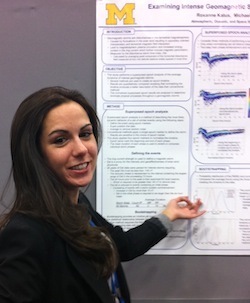
Co-author Katus
“The Magnetospheric Banana Current,” Michael W. Liemohn, Natalia Yu Ganushkina, Roxanne M. Katus, Darren L. De Zeeuw, Daniel T. Welling, Journal of Geophysical Research: Space Physics, epub February 15, 2013. The authors, at the University of Michigan, reports:
“It is shown that the banana current, a current system in the inner magnetosphere closing entirely within the magnetosphere (i.e., not through the ionosphere or on the magnetopause) but not circumflowing around the Earth, is a regular feature of near-Earth space. Closure options for the eastward asymmetric current on the inside of a localized pressure peak were explored, with the conclusion that the current must close via westward current around the outside of the high pressure region. It is a current that encircles a pressure peak and, therefore, whenever there is a pressure peak in the inner magnetosphere, a banana current exists. If multiple pressure peaks exist in the inner magnetosphere, then multiple banana currents will also coexist.”
(Thanks investigator Tom Gill for bringing this to our attention.)
BONUS (unrelated): Gluten free banana current muffins
BONUS (unrelated): Banana current weather

At the Centre for the Unknown: dilemmas of the gourmet fly
At the Centre for the Unknown, people (some well-known, some not) strive to make sense of dilemmas. This paper, which centers on Drosophilan dilemmas, has just emerged from the Centre:
“The dilemmas of the gourmet fly: the molecular and neuronal mechanisms of feeding and nutrient decision making in Drosophila,” Pavel M. Itskov and Carlos Ribeiro, Frontiers in Decision Neuroscience, epub February 12, 2013.
The authors persist at Champalimaud Centre for the Unknown, in Lisbon, Portugal. Here is a photo of the Centre for the Unknown:
And here is a knowing diagram from the Centre for the Unknown’s gourmet fly paper:
(Thank to investigator Neil Martin for bringing this to our attention.)

Marc Abrahams's Blog
- Marc Abrahams's profile
- 14 followers


